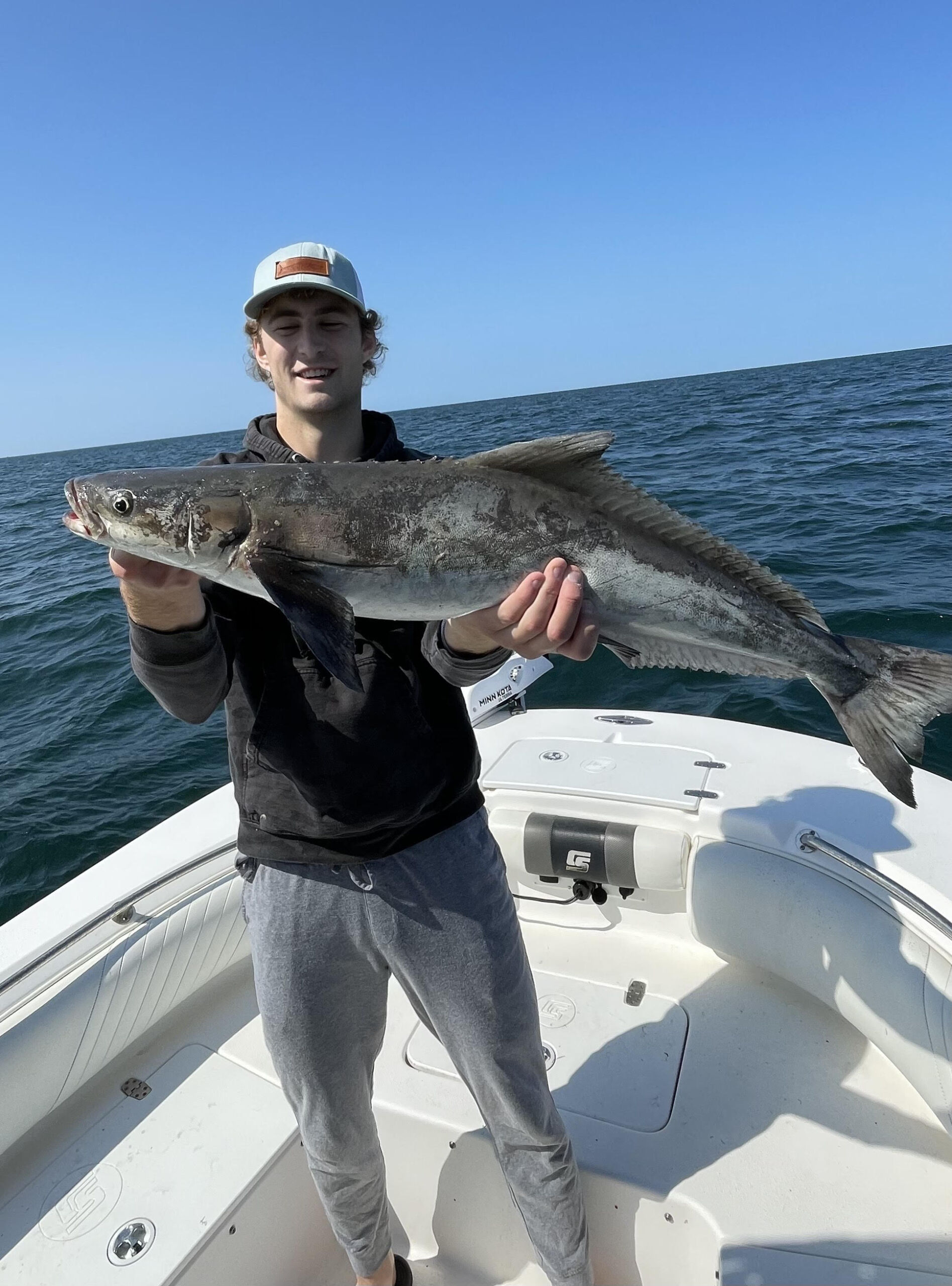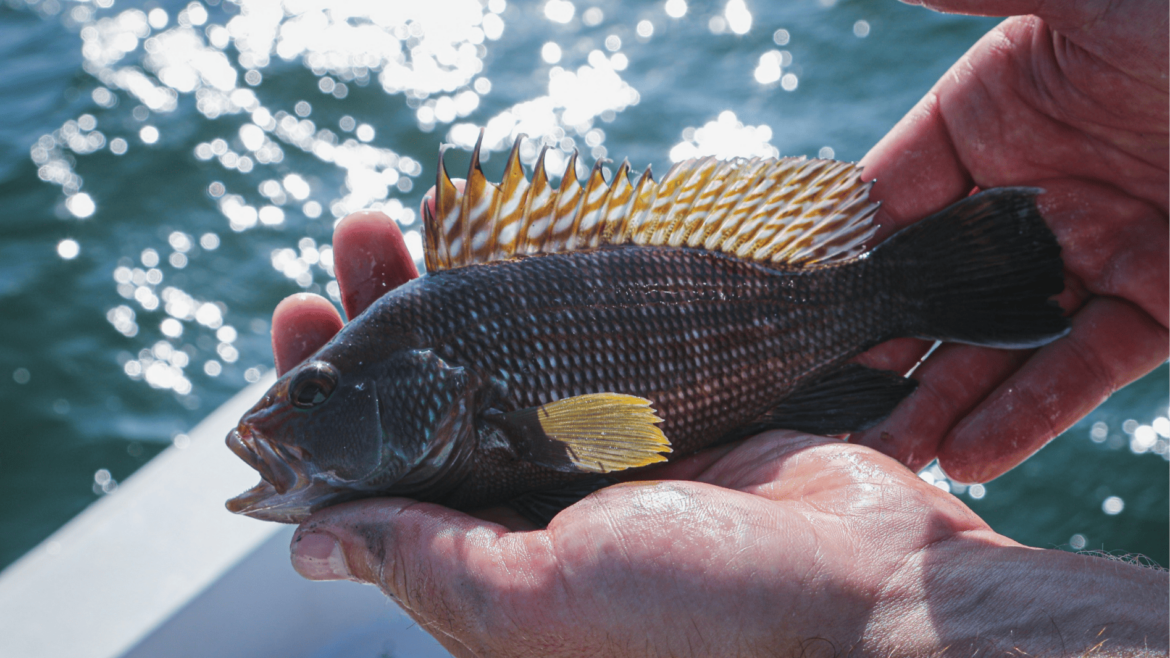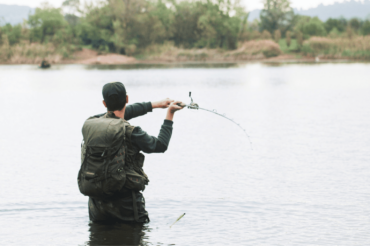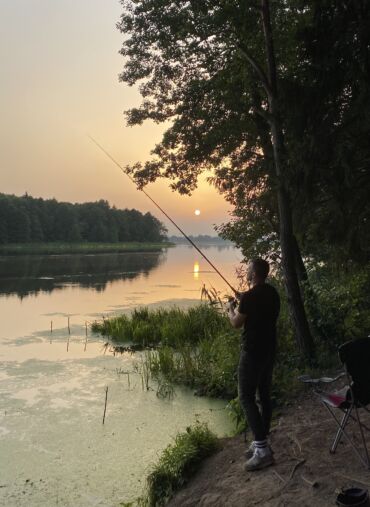Before you go fishing for the day or plan your fishing trip, it’s not uncommon to check the weather, and if you’re not checking the weather before you hit the water for a fishing trip, either inshore or offshore, you should be!
The weather forecast not only allows you to choose where you’re going fishing, how rough or calm the water will be, tides, and what to wear, but it also tells you what the barometric pressure will be.
Believe it or not, but the barometric pressure is a crucial component of fishing conditions, and there is a perfect time to hit the water and chase your favorite fish species.
In the following article on finding the best barometric pressure for fishing, we’ll cover:
If you love fishing and you’re looking to improve your fishing or plan your next fishing holiday, be sure to check out the Best States for Fishing: A Comprehensive Guide for Anglers, which will give you an in-depth look at the best states in the USA to go fishing!
Thanks to the Fishbox, a premium downloadable Fishing App that you can take fishing with you wherever you go fishing, you’ll know the perfect time to plan your destination fishing trip based on accurate barometric pressure weather predictions, when your target species is most active, and the best local hotspots.
Get your personalized fishing map
Answer a quick quiz and get your own personalized fishing map
To give you more accurate barometric pressure predictions, the Fishbox App uses advanced weather analysis technology, which factors in fish behavior, duration of weather conditions, and tides to give you the best indication of peak fishing times.
Expert Opinion on the Best Barometric Pressure for Fishing

Pierce Latta
16 years fishing experience
“Barometric pressure has always been something I’ve heard about for many years with regard to fishing. It is normally associated with all the other weather data, such as sunlight, moon phase, water temperature, air temperature, and so on, but I’ve really never paid much attention to it. After reading this article, however, I think it might be time to start considering it a little bit more than usual.
Now that I use the Fishbox app, I have a super easy access point to reading barometric pressure and how it will affect the bite, which is amazing. Take advantage of this app and use it to your advantage, as I have done.
I love that the first thing we get in this article is a discussion of what barometric pressure actually is. Many people, myself included, probably don’t understand what it is or its effects. This is a great way to introduce the topic, as it gives a little bit of detail as to how this measurement can influence the bite.
The article continues with a discussion of how barometric pressure is measured and the typical number at which it usually sits in different conditions. This perfectly segways into the next section, which gives insight into the biology of fish and how pressure can affect feeding patterns and, thus, the bite. The article mentions the swim bladders of fish and how this pressure can affect them. It even discusses how small fish are more affected by significant barometric pressure changes.
While most people aren’t necessarily concerned about catching these small baitfish, they are concerned with catching the fish that eat them. That means if a swing in barometric pressure forces the bait deeper or shallower, the predators will also be forced to shift locations as well.
The article then follows with a couple of sections, giving insights into various conditions regarding barometric pressure and how it affects the bite. Pay careful attention to this section, as it can give you a good idea of where and when you should be fishing, given that the barometric pressure is a certain amount. This ties back into something I always tell anglers—you never want to go out fishing without having done some behind-the-scenes work. And by behind-the-scenes work, I mean looking at weather patterns and recent catches, using resources like the Fishbox app, and planning out what you want to target. Preparation like this gives your days on the water a much higher chance of success and thus gives them the ability to be far more enjoyable.
Right before the conclusion, we also get a brief FAQ section. This helped me tie up a few loose ends and closed out the article very well.
Overall, I know this topic might not be as interesting as something like how to catch largemouth bass, but I think it is just as important, if not more important. As I have matured in fishing over the years and have gotten better and better at what I do, I’m learning that fishing is less about the fish and more about the science behind it.
Yes, at the end of the day, you still must have a line in the water to catch fish, but science-based angling has an unparalleled ability to bring you more success in the water. Paying attention to small details like barometric pressure can spell the difference between a good day and a great day. I hope you have enjoyed reading the article and these comments. As always, good luck and tight lines!”
Visit his Instagram profile.
Subscribe to his YouTube channel.
What is Barometric Pressure?
Barometric pressure, sometimes referred to as atmospheric pressure or simply air pressure, is the weight of the air as it bears down on the Earth’s surface. Most people won’t feel a change in the barometric pressure. However, some people feel a pressure change in their joints as the pressure changes allow tendons, muscles, and body tissues to relax and contract. It might not sound important, but changes in barometric pressure affect various things, including weather, how fish and animals behave, and how they feed.
The height above sea level has a direct impact on air pressure. The higher you are, the lower the barometric pressure. Along with altitude, weather systems such as high and low-pressure systems can all affect the barometric pressure, with significant changes occurring in short periods.
While the barometric pressure can remain pretty consistent in most climates, there are factors that will influence changes in pressure, such as movement in the atmosphere and temperature caused by weather behavior, both of which will dramatically affect fish feeding activity.
Measuring Barometric Pressure
Now that you know what barometric pressure is, you’ll understand the importance of learning how to measure it accurately. Barometric pressure is measured by a device known as a barometer. Barometers utilize a column of mercury within a glass tube, which rises and falls depending on the weight of the atmosphere.
The weight of any object is connected to the gravitational force applied to it, with the atmosphere weighing more the closer you are to sea level. Rapid drops in barometric pressure are the biggest influence on fish behavior and can lead to the biggest increase in fish feeding, which is great if you’re an angler who loves catching more fish while spending less time out on the water.
If you don’t have a barometer, or you’re fishing away from home and don’t want to invest in one, then luckily, the Fishbox App has you covered. The Fishbox App uses advanced weather analysis technology, which factors in fish behavior, duration of weather conditions, tides, and barometric pressure changes to give you the best indication of peak fishing times.
- A barometric pressure reading between 29.70 and 30.20 inHg is considered normal weather and most commonly associated with consistent weather.
- A barometric pressure reading over 30.20 inHg is considered high, and high atmospheric pressure is commonly associated with sunny skies and pleasant weather conditions.
- A barometric pressure reading that’s below 29.80 inHg is considered low, and low atmospheric pressure is commonly associated with warm air, rain, and cloudy or overcast weather conditions.
How Barometric Pressure Affects Fish Behavior
Unlike people, fish are much more attuned to their habitat and environment. Even small changes that we would consider insignificant can drastically change how the fish in your local area normally act, including when they feed, what they feed on, and how aggressively they feed.
Fish have a variety of in-built sensors, including lateral lines, which pick up movement and vibrations underwater, and these senses will pick up changes in barometric pressure. Another way fish notice changes in air pressure is through their organs.
Fish have organs known as swim bladders. These bladders are sacs that contain air and allow fish to maintain their buoyancy while underwater, preventing them from sinking to the bottom or floating to the surface. As air pressure increases, the bladder gets smaller. If pressure changes too quickly, it can become painful for fish, making it harder for them to stay balanced in the water and typically putting them off feeding.
The smaller the fish, the more significant the atmospheric effects on their swim bladder will be, with a lot of smaller fish heading to deeper water to offset the effects of a drastic pressure change. However, where you find fish during pressure changes isn’t the only effect of barometric pressure.
Thanks to how highly attuned fish are to weather changes, including pressure changes, they’ll know when a pressure change is on the way and start to feed more in preparation for reduced feeding activity.
Smaller fish are more likely to be affected by pressure changes, but larger fish will still feel the effects of severe barometric pressure changes. When the smaller bait fish move to deeper water, larger prey species will follow them out of the shallow water.
Best Pressure for Fishing: Key Insights
Ask anyone which barometric pressure is best to go fishing, and you’re likely to get various answers. However, there are some ranges that will prove the best for fishing.
When you’re angling at high pressure, 30.20+, and the skies are clear, the fish will most likely be feeding less aggressively and also hanging out in deeper water. You’ll need to fish slower and deeper.
In medium pressure conditions, 29.80 to 30.20, the fishing should be average, with fish feeding usually and found at standard depths. The fishing won’t be terrible, but it won’t be great either.
At low pressure, below 29.80, when it’s typically cloudy or overcast, fish activity will be slow, with fish generally hanging out under cover or in deeper water. You’ll need to be accurate with your casting and use lures or jigs that stand out in low light-level conditions.
When the pressure starts to fall, or the weather is transitioning from sunny to overcast and rainy, this is the time to hit the water. Fish know the barometric pressure is about to fall and are feeding aggressively in order to stock up before the air pressure drops completely.
Do Fish Bite Better in High or Low Pressure?
As we mentioned above, your best chance of catching fish is when the barometric pressure is falling. That’s because fish don’t feed as much during high and low-pressure periods, and falling pressure is an indication to them that they need to stock up and ride out the storm. However, that doesn’t mean that normal barometric pressure periods won’t deliver a good fishing experience.
In fact, it’s handy to understand how the fish in your local area act during periods of normalcy. It will give you an accurate baseline of what to expect and also allow you to better understand the fish’s behavior when the pressure is rising or falling.
One factor to consider is that high pressure is typically associated with bright, sunny, and clear skies, which can drive fish into deep water. In contrast, low-pressure systems are associated with overcast or cloudy skies, which will keep fish in shallower water. Still, they’ll most likely be found under structure and deep cover, so you’ll need to adjust where you’re fishing, what you’re fishing with, and retrieval speeds accordingly.
Read also: Best Tide to Go Fishing: High or Low Tide?
Barometric Pressure FAQs
Below, we’ve covered some barometric pressure FAQs to help you capitalize on the weather conditions and get the most out of your time spent on the water. However, just because the barometric pressure is low, normal, or high doesn’t mean you won’t catch any fish; it can impact how fish behave and how many opportunities you have to catch them.
If you plan on fishing in less-than-optimal pressure or weather conditions, you’ll need to adjust how you fish accordingly if you want the best chance of success. Remember to factor in the weather conditions such as wind, rain, and sunshine, what depth the fish will be in the water, and where the fish will be hiding or feeding.
What is considered high pressure?
Any barometric pressure reading that is over 30.30 inHg is considered to be high pressure. During periods of high pressure, fish, notably smaller fish, will move into deep water, and the larger prey fish will follow them down into the depths. You’ll need to fish deeper and slower.
What is considered low barometric pressure?
Any barometric pressure reading that is lower than 29.80 inHg is considered to be low barometric pressure. During periods of low pressure, fish won’t feed as actively and can typically be found hiding under or around cover. You’ll need to target fish in cover and put an enticing bait, lure, or jig close to them to tempt them into biting.
What is considered normal barometric pressure?
Any barometric pressure reading that is between 29.70 and 30.20 inHg is considered to be normal barometric pressure. Fishing during periods of normal atmospheric pressure is the best way to gauge regular fish feeding and activity. It will allow you to create a baseline for your target species regarding how they feed, where they feed, and what types of lures, bait, or jigs they prefer.
What is the best barometric pressure for fishing?
The best barometric pressure for fishing is during a falling pressure system when the barometric pressure is falling from normal ranges. Fish have a very accurate system of sensors that tells them a low-pressure system is coming, and their feeding will become more aggressive in preparation for a lull in feeding activity.
Is 30 high for barometric pressure?
A barometric pressure reading over 30.00 inHg is considered to be in the ‘high’ range and won’t provide you with optimal fishing conditions.
Best Barometric Pressure for Fishing: Ultimate Guide – Conclusion
There you go! Everything you ever wanted to learn about barometric pressure, including what barometric pressure is, how barometric pressure affects fish behavior, the best barometric pressure to go fishing, high pressure versus low pressure, and barometric pressure FAQs.
Get your personalized fishing map
Answer a quick quiz and get your own personalized fishing map
Thanks to the Fishbox App, a premium downloadable Fishing Forecasting App that you can take fishing with you wherever you go fishing, you’ll know the perfect time to plan your destination fishing trip based on accurate barometric pressure weather predictions, when your target species is most active, and the best local hotspots.
If you enjoyed this article or would like to share some tips or tricks that you’ve learned over the years with other anglers just getting started, be sure to drop a comment below. You never know. Your advice could be the difference between someone discovering the joy of fishing or never fishing again.



